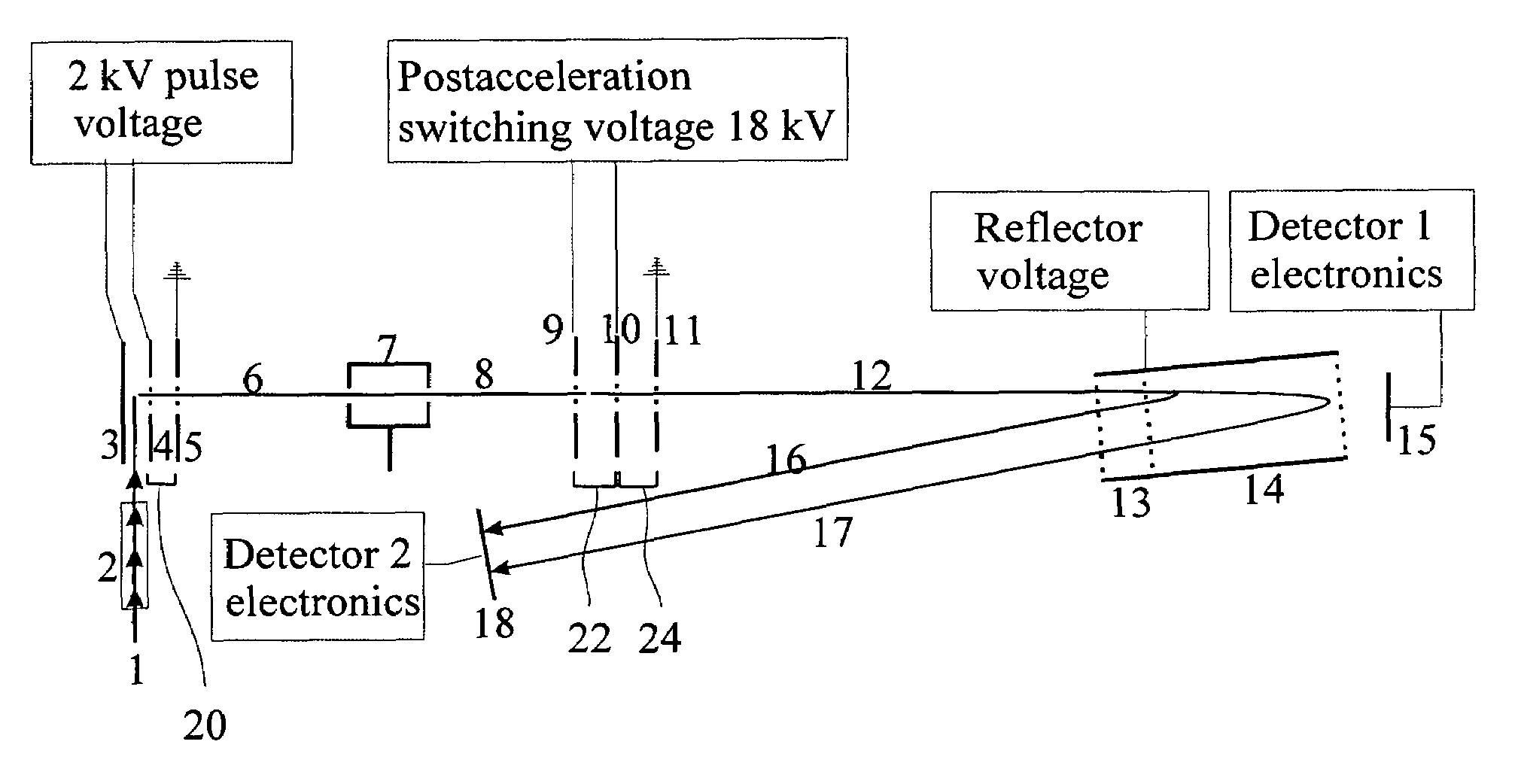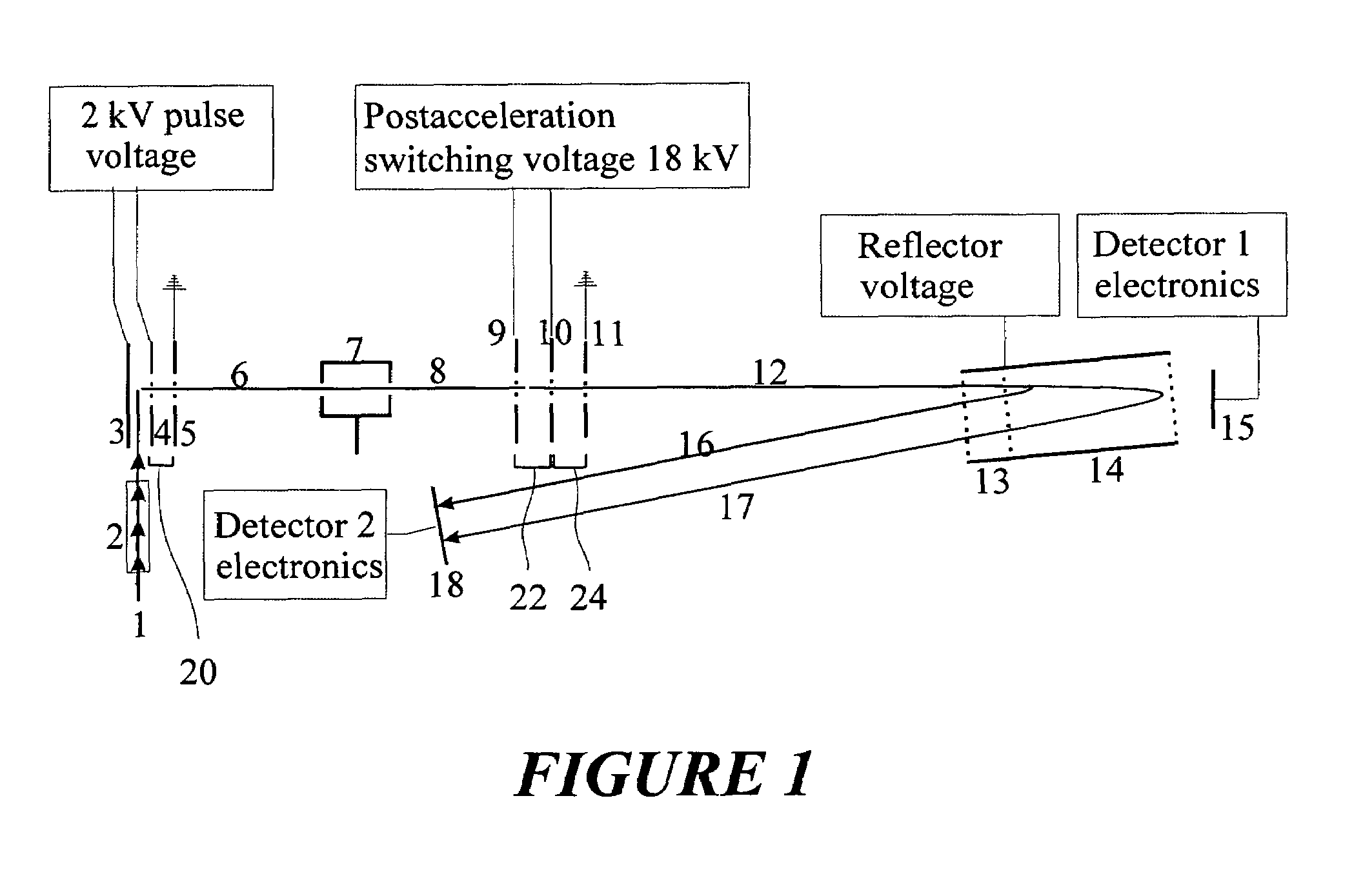Daughter ion spectra with time-of-flight mass spectrometers
a mass spectrometer and daughter technology, applied in mass spectrometers, particle separator tube details, separation processes, etc., can solve the problems of no further rapid and accurately timed voltage switching, poor selectivity, and high acceleration potential, and achieve the effect of improving mass resolving power
- Summary
- Abstract
- Description
- Claims
- Application Information
AI Technical Summary
Benefits of technology
Problems solved by technology
Method used
Image
Examples
Embodiment Construction
[0015]A preferred embodiment of a method and a device according to this invention is shown in FIG. 1 as a schematic diagram. The ions are shaped into an ion beam (1) in an ion source (not shown). The parent ions, whose structure is to be determined, are selected in a mass filter (2), preferably an RF quadrupole mass filter, whereby all other ions are eliminated. The ion beam of parent ions is then injected, orthogonally to the flight path, into the time-of-flight mass spectrometer, more precise into the space between the two diaphragms (3) and (4) of the pulser. The injection is carried out at a very low energy of around 20 electron-volts. The slow ions fill the space between the diaphragms (3) and (4) in a time of around 10 to 50 microseconds, depending on the mass of the parent ions. When the space has just been filled, both diaphragms (3) and (4) are raised to a potential difference of around two kilovolts, the repelling diaphragm (3) having a somewhat higher potential, the attra...
PUM
 Login to View More
Login to View More Abstract
Description
Claims
Application Information
 Login to View More
Login to View More - R&D
- Intellectual Property
- Life Sciences
- Materials
- Tech Scout
- Unparalleled Data Quality
- Higher Quality Content
- 60% Fewer Hallucinations
Browse by: Latest US Patents, China's latest patents, Technical Efficacy Thesaurus, Application Domain, Technology Topic, Popular Technical Reports.
© 2025 PatSnap. All rights reserved.Legal|Privacy policy|Modern Slavery Act Transparency Statement|Sitemap|About US| Contact US: help@patsnap.com


